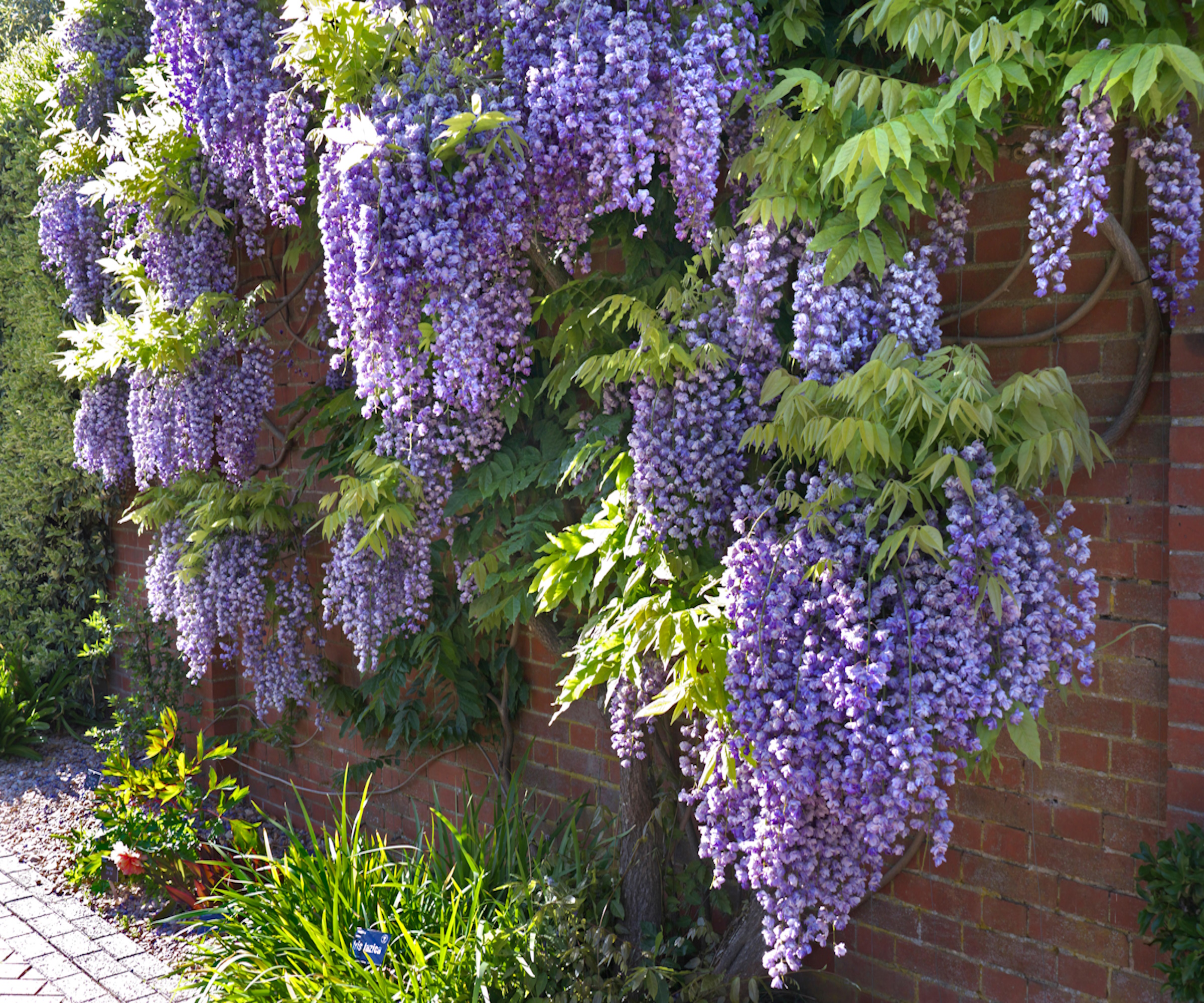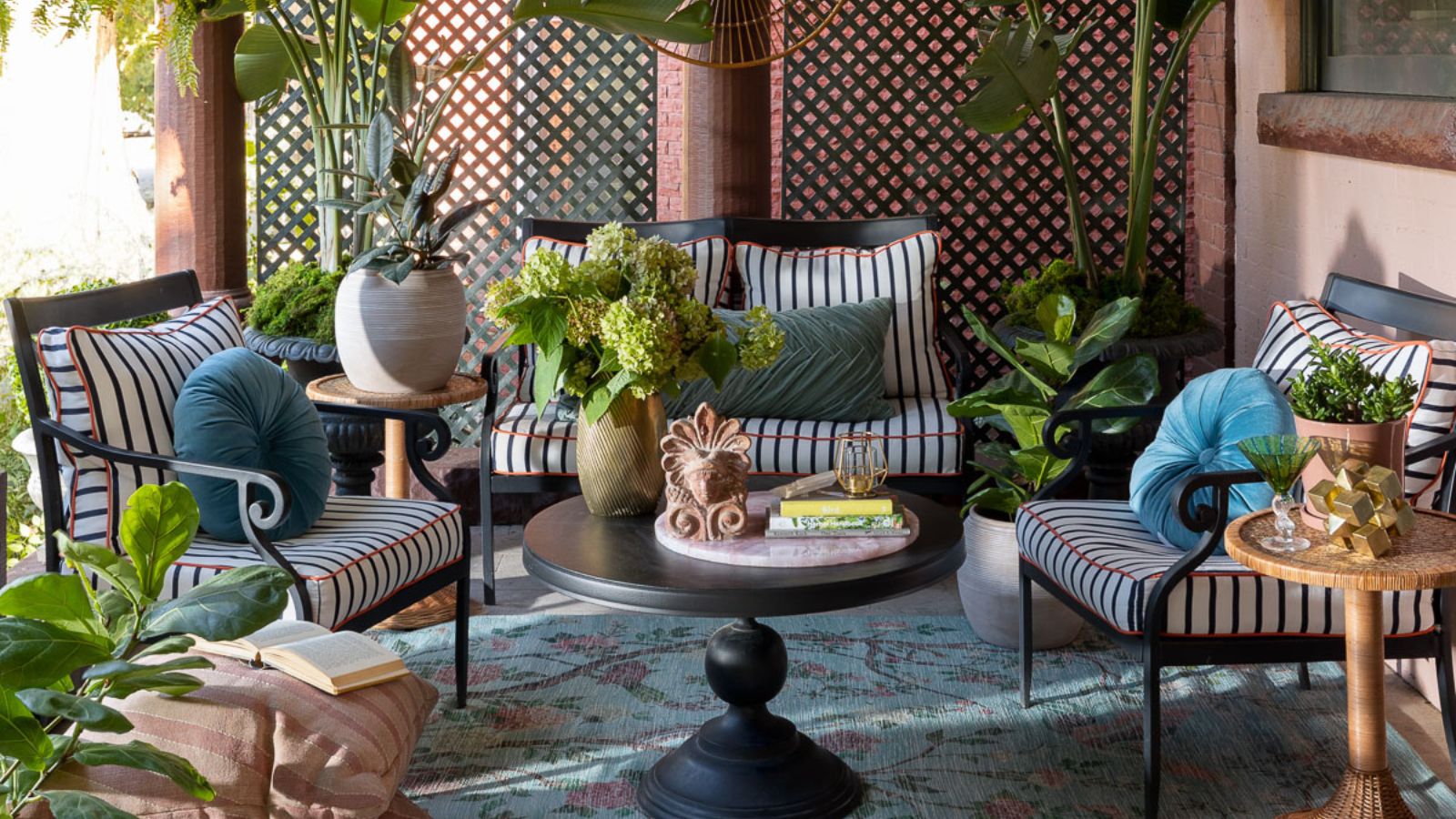Is it necessary to fertilize wisteria? Feeding these resilient and vigorous climbers can often do more harm than good
Knowing when, and when not, to fertilize wisteria is a crucial part of caring for this fragrant climber


Famed for its fragrant blooms, wisteria is one of the most popular flowering climbers and it is easy to understand why. Whether grown across pergolas, arches or fences, wisteria adds impact to any space, notably producing a bounty of pendulous perfumed flowers in spring and summer. In the flowering climber Olympics, wisteria would be hard to beat, with full marks for vigor and verve.
Last summer, while working as a professional gardener in Tuscany, I maintained several white-flowering wisteria plants that adorned a long pergola walkway. This white-flowering variety -Wisteria floribunda 'Alba' - is particularly striking. As with any wisteria, the scent was both heady and intoxicating underneath the floral canopy. If you are seeking a floriferous and fragrant climber for your yard, this option won't disappoint.
When considering how to grow wisteria, these fragrant flowers are vigorous and resilient, often producing more than 10 feet of growth in one season. As a tough and self-reliant plant, it is not always necessary to apply fertilizer, and these plants can grow just fine without gardener interference. Here, one expert reveals when to reach for the fertilizer, and when to leave it in the garden shed.

Is it necessary to fertilize wisteria?
Wisteria climbers are notably vigorous and can be invasive if left unpruned. For example, the Chinese wisteria, Wisteria sinensis, is a prolific plant that can be grown in US hardiness zone 5 to zone 8. Without regular pruning, this species can cause problems. The native American wisteria, Wisteria frutescens, is less invasive and can be grown up to and including US hardiness zone 9. Whatever species you grow, knowing when - and when not - to fertilize wisteria plants is important.
When to fertilize wisteria

'While it seems natural to reach for the fertilizer during the growing season, it is sensible to consider first if it is absolutely necessary,' says plant expert Katie Sunderlage.
'Although it is really tempting to fertilize wisteria in the hope of more flowers, it's generally not needed,' Katie continues. 'Wisteria are tough and resilient plants, and can often find what they need in the soil themselves.'
As Katie says, many of us gardeners tend to think that feeding is just something that needs to be done during spring and summer, but this common fertilizing mistake can often do more harm than good.
'Wisteria plants are legumes, meaning they are part of the pea, or Fabaceae, family,' Katie adds. 'Legumes are nitrogen-fixing, so the roots of each plant can produce the nitrogen needed to survive and thrive.
'For this reason,' Katie continues, 'wisteria plants do not require additional nitrogen from fertilizers. If you do use a fertilizer high in nitrogen, you risk promoting additional foliage growth at the expense of flower production.'
While nitrogen is not needed by wisteria plants, other nutrients can be in short supply. Katie recommends using a soil test, available from Walmart, which will help you to understand the nutrient supply in your soil. If phosphorus levels are low, for example, flower production can be disappointing. There are ways to quickly eradicate this problem.

Operations Manager at Holland Group, managing the customer service department and purchasing. Katie has been in the green industry since 2005 in the Greater Milwaukee area, earning her degree in Horticulture in 2008. She has been able to share her love for plants working in multiple garden centers, in sales positions and most recently in an online retail platform at Holland Group.
How to fertilize wisteria

If you want to encourage more blooms on your wisteria plant, it is best to use a bloom booster fertilizer. These products should be high in phosphorus, which is the nutrient conducive to flower development.
'When considering plant fertilizer numbers, you are looking for a fertilizer with the middle number of the formulation higher than the other two numbers,' Katie advises. 'Something like 10-20-10, for example.
'The best time to apply a bloom booster fertilizer is in spring when the foliage is starting to unfurl,' Katie adds. 'Slow-release fertilizers are a good option, as they can help feed your plants throughout the season.' Slow-release bloom boosters are available from Amazon.
Other options include water-soluble fertilizers that can be applied during the spring and summer months, such as this organic bloom booster fertilizer, available from Walmart.
'Always follow the instructions on any fertilizer,' Katie cautions, 'to avoid fertilizer burn and long-lasting damage to the plant. In addition, always apply these feeds at the base of your wisteria to avoid leaf burn and encourage the best nutrient absorption.'

This Miracle-Gro bloom booster fertilizer is high in phosphorus and will promote flower production for your cherished shrubs and perennials.
FAQs
My wisteria has yellow leaves - should I fertilize it?
If your plant has yellow foliage during the growing season, this can be a sign of nutrient deficiency. Any standard soil testing kit, available from Amazon, will be able to identify nutrient problems, so I recommend completing a test before applying any fertilizer. Problems can be easily resolved with soil treatments and conditioners. For example, if your soil is low in iron - which can cause the foliage to turn yellow - applying fresh compost and mulch will help.
Fertilizing plants when it is not necessary can often do more harm than good. If your wisteria plants are healthy and flowering well, I recommend keeping the fertilizer in the garden shed this year. For more plant care advice, see our guide on how to grow wisteria from cuttings, for patient gardeners who want to try propagating this fragrant climber.
Sign up to the Homes & Gardens newsletter
Design expertise in your inbox – from inspiring decorating ideas and beautiful celebrity homes to practical gardening advice and shopping round-ups.

Thomas is a Content Editor within the Gardens Team at Homes and Gardens. He has worked as a professional gardener for both public spaces and private estates, specializing in productive gardening, growing food and flowers. Trained in Horticulture at the Garden Museum, he has written on gardening and garden history for various publications, including The English Garden, Gardens Illustrated, Hortus, The London Gardener and Bloom. He has co-authored a Lonely Planet travel book, The Tree Atlas, due out in 2024.
-
 Martha Stewart's tips for arranging daffodils are unbelievably simple and effective – it's the only flower advice you need this springtime
Martha Stewart's tips for arranging daffodils are unbelievably simple and effective – it's the only flower advice you need this springtimeMartha shows us that we can create gorgeous bouquets of this seasonal flower by simply trimming the stems and placing them in specific vases
By Hannah Ziegler Published
-
 Designers share how to make your outdoor living room look more expensive – and the affordable products to get you there
Designers share how to make your outdoor living room look more expensive – and the affordable products to get you thereFrom layered lighting to luxe-looking textiles, these simple swaps made all the difference
By Charlotte Olby Published
-
 How to grow astilbe – expert advice on cultivating this shade-tolerant flowering perennial
How to grow astilbe – expert advice on cultivating this shade-tolerant flowering perennialShade-tolerant and pest-resistant - astilbe are hardy and tough perennials that can thrive in many settings
By Ellen Wells Published
-
 7 native perennials to plant in April – for glorious flowering displays to attract bees, butterflies, and hummingbirds
7 native perennials to plant in April – for glorious flowering displays to attract bees, butterflies, and hummingbirdsDiscover some of the best perennials to plant in April to make your garden a hotspot for wildlife
By Drew Swainston Published
-
 Is the viral salt hack the secret to a weed-free patio? A garden expert warns of irreparable, long-term damage – plus reveals the safest way to get results
Is the viral salt hack the secret to a weed-free patio? A garden expert warns of irreparable, long-term damage – plus reveals the safest way to get resultsYou might have seen gardeners on TikTok or Instagram using salt to kill weeds in pavers, but this hack should be avoided at all costs
By Thomas Rutter Published
-
 Worst-smelling plants to avoid – experts reveal 5 pungent species and suggest perfumed options to grow instead
Worst-smelling plants to avoid – experts reveal 5 pungent species and suggest perfumed options to grow insteadThese are some of the worst-smelling plants that can cause quite a stink
By Thomas Rutter Published
-
 How to fertilize magnolias – garden experts reveal the secrets to better blooming, and timing is critical
How to fertilize magnolias – garden experts reveal the secrets to better blooming, and timing is criticalMagnolias are famed for their spring flowers, and feeding at the right time can give trees a boost
By Thomas Rutter Published
-
 How to revive old rhododendron plants – pruning advice from a professional gardener to save your struggling shrubs
How to revive old rhododendron plants – pruning advice from a professional gardener to save your struggling shrubsWith the right pruning approach, you can rejuvenate old and woody rhododendrons
By Thomas Rutter Published
-
 How to grow medlar trees – to enjoy a harvest of unusual fruits from this forgotten heritage species
How to grow medlar trees – to enjoy a harvest of unusual fruits from this forgotten heritage speciesMedlar fruits were once a popular delicacy, yet today, they are a rare find
By Thomas Rutter Published
-
 Best fragrant shrubs – 5 perfumed plants to transform garden borders and pot displays this summer
Best fragrant shrubs – 5 perfumed plants to transform garden borders and pot displays this summerGrow one or more of the best fragrant shrubs to add a sensory element to your yard
By Thomas Rutter Published